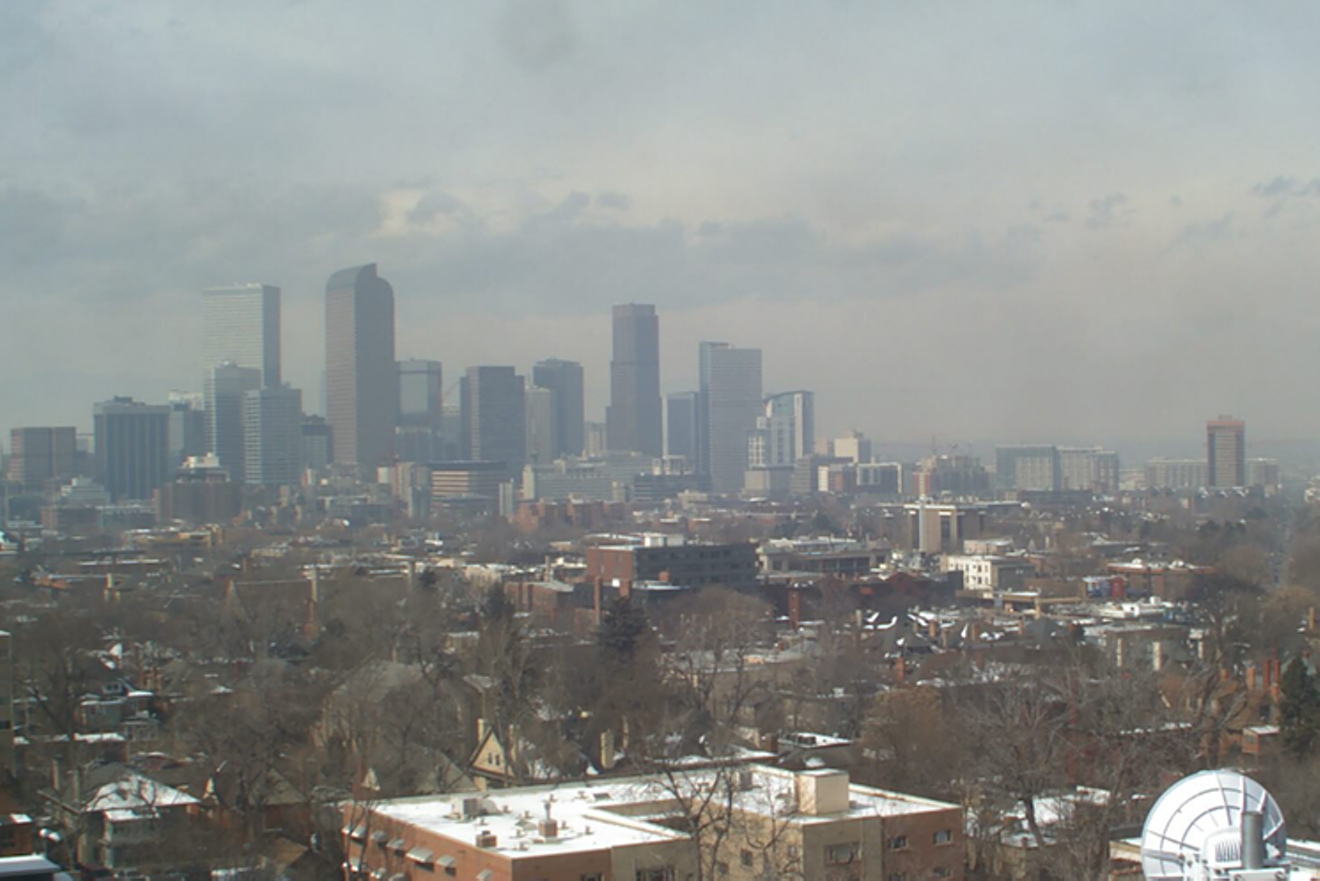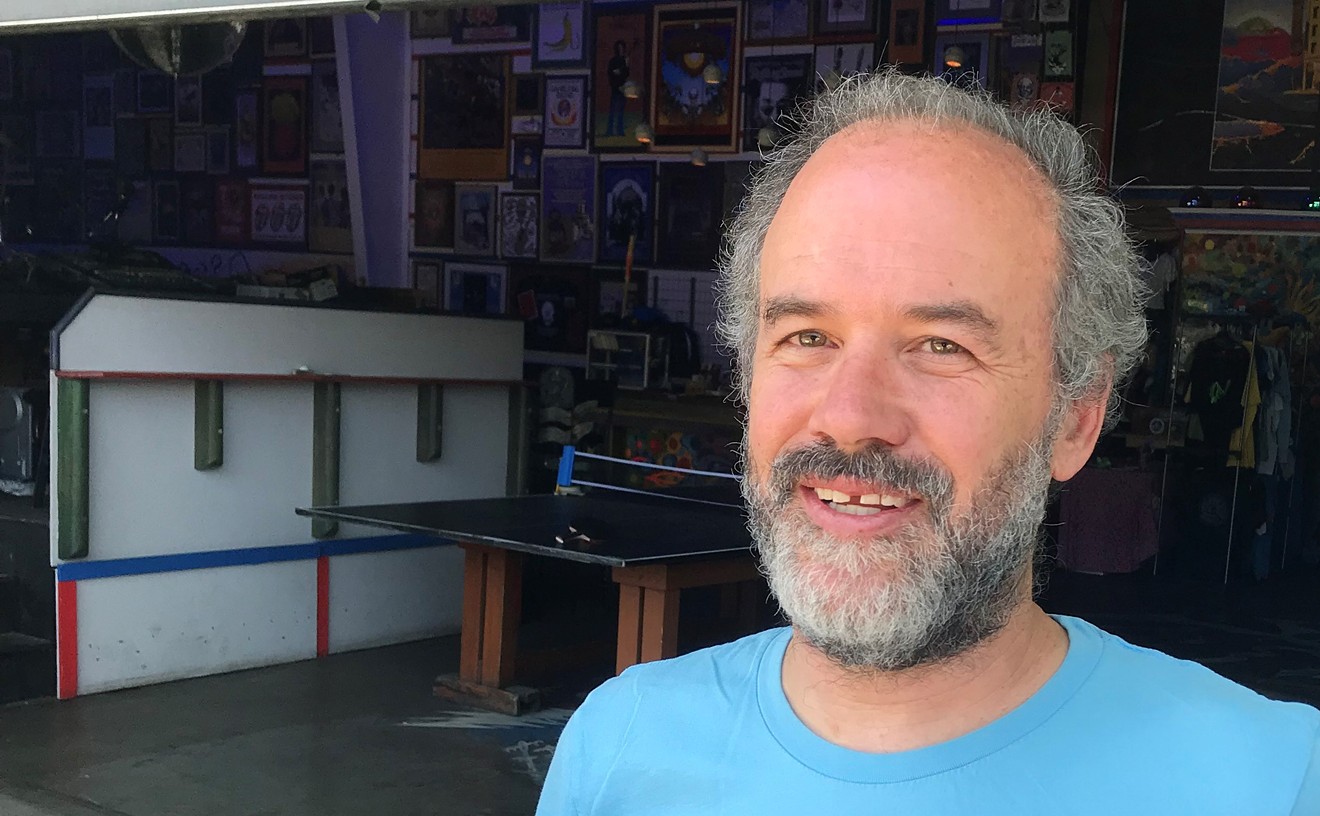When Madhvi Chittoor was five years old, she watched a documentary about plastic waste and the Great Pacific Garbage Patch in the Pacific Ocean. After that, she founded her own environmental nonprofit, Madhvi4EcoEthics, and advocated to eliminate styrofoam from her school district while also helping inspire the state’s first bill to regulate harmful PFAS chemicals, among other environmental activism efforts.
Now eleven, she’s weighing in on the Front Range’s ozone problem, which heated up in April when the Environmental Protection Agency decided to downgrade the status of the northern Front Range from a serious violator of federal ozone standards to a severe violator because the area had failed to bring ozone below the EPA’s 75 parts per billion National Ambient Air Quality Standard, which the agency established in 2008. The northern Front Range also does not comply with the EPA’s new standard of 70 parts per billion, adopted in 2015.
Since then, state agencies have been working to develop a State Implementation Plan for the severe 2008 designation while continuing to develop a SIP for its non-compliance with the 2015 standard in tandem. The Regional Air Quality Council voted to send the draft of both SIPs to Colorado's Air Quality Control Commission in August, and the AQCC is scheduled to hold a hearing December 13-16 to determine if the plans should be sent to the EPA.
But before that, a coalition of local governments discovered a discrepancy in data that caused the Colorado Department of Public Health and Environment’s Air Pollution Control Division to temporarily withdraw parts of the 2008 plan.
According to a November 11 temporary notice of withdrawal submitted by the APCD to the AQCC, emissions inventories that account for two ozone precursors, volatile organic compounds and nitrogen oxides were calculated incorrectly for the oil and gas industry in the non-attainment area, only accounting for new drilling in 2017 rather than total operative oil wells.
“A corrected emission factor was immediately developed, and new emissions were calculated,” the notice said. “The correction resulted in nearly a doubling of NOx emissions from pre-production relative to what is currently in the inventory in the SIP proposal before the Commission.”
A Local Government Coalition combining representatives from Aurora, Broomfield, Lafayette, Boulder County, Denver and Colorado Communities for Climate Action (itself a coalition of local governments) had discovered the discrepancy when preparing its pre-hearing statement to the AQCC.
Cindy Copeland, air and climate policy advisor for the Boulder County Commissioners’ Office, says the group requested data from the APCD on pre-production emissions from oil and gas, and the data it received didn’t match up with the data used in the SIP. After looking at Comprehensive Area Reports filed with the Colorado Oil and Gas Conservation Commission, the group recognized the discrepancy and pointed it out in its pre-hearing statement.
Chittoor was part of another pre-hearing statement, prepared by Earthjustice on behalf of GreenLatinos, Womxn From the Mountain, Healthy Air and Water Colorado, and Madhvi4EcoEthics. She says that ground-level ozone is a killer to all, particularly children, and she wanted to be sure they had a voice in the process.
Ozone can aggravate lung conditions such as asthma and chronic obstructive pulmonary diseases; it’s particularly dangerous for young children and adults over 65. Denver ranks seventh on the American Lung Association's list of most polluted cities for ozone in 2022.
“Air is super important,” Chittoor says. “It’s our survival itself. I fight for every living being’s fundamental right to clean water, clean air and health, especially for voiceless children.”
In the SIP that the RAQC submitted in August, it projects compliance with the 2008 standard before 2027, which is when the area must achieve that goal, but says it does not expect to achieve compliance with the 2015 standard by 2024, which is the deadline. As a result, many environmental groups and local elected officials called for the SIP to include more control measures beyond just the federally mandated requirements.
The revelations about ozone miscalculation have only made environmental groups more insistent that the SIP needs to be stronger.
“It's a real opportunity for us to work with the state — for the state to make those corrections, and then, through the course of making those corrections, it'll be very clear that we definitely need additional control measures added to the SIP so that we can show attainment right now," says Copeland.
In a statement, the APCD said it chose only to revise the 2008 SIP in light of the new data because it already projected it could not meet the 2015 standard by the 2024 deadline, and so the 2015 SIP’s attainment demonstration would lead to the same result despite the new information. However, it is revising parts of the 2008 SIP and will ask the AQCC to approve the proposed mitigation strategies in that plan without delay.
Still, the LGC and Justice and Health Group are hoping the AQCC will take the new information about the data discrepancy as a chance to make both documents stronger, particularly when it comes to including environmental justice as part of the plans.
Sabrina Pacha, director of Healthy Air and Water Colorado, which is working on the impacts of climate change, says that HAWC has observed more health impacts in lower-income communities and communities of color, which are historically more likely to live closer to major sources of pollution.
“The health professionals we work with who treat the people in disproportionately impacted communities, I don't think that's a surprise for them, necessarily, because every day they're living the reality of what it means to have high ozone emissions in their communities,” she says. “Even though our data was off, the folks with lived experience were facing the consequences of this every day, regardless of the data. So I think it also highlights how important it is for state regulators to really take into account the lived experiences of community members.”
Along with completing an equity analysis, the Justice and Health Group asked the state to look into control measures like electrifying trucks; improving modeling and monitoring for air permits in the oil and gas industry; and rejecting the 2015 attainment demonstration because of a lack of sufficient control measures in the plan.
“This calculation error — it affected the 2008 standard SIP, yes, but it also affected the 2015 standard SIP,” says Caitlin Miller, senior associate attorney for Earthjustice. “Despite that, the division is still trying to press forward with that SIP.”
According to Copeland, accurate data is critical to fixing the ozone problem, because it's needed to measure the impact of emission control measures.
“If the data isn't accurate and it's showing that there are fewer emissions in our area, then the end result will make it look like we don't need to do as much to reduce emissions as we do,” she says.
The LGC submitted suggested language to be included in the SIP’s statement of basis and purpose that would give the APCD a stronger directive in future SIP rulemakings, including directing the state to look into specific control measures and make a commitment to environmental justice during 2023 ozone control decisions.
“I’m glad the commission did not try to cover up its findings,” Chittoor says. “Acknowledging this is the first step and opens up possibilities to new solutions. … We should not go forward with a faulty 2015 SIP. We need a new plan, and the commission must boldly take the steps. Air is our survival itself, and every living being, they deserve to breathe clean air with no pollution.”
[
{
"name": "Air - MediumRectangle - Inline Content - Mobile Display Size",
"component": "12017618",
"insertPoint": "2",
"requiredCountToDisplay": "2"
},{
"name": "Editor Picks",
"component": "17242653",
"insertPoint": "4",
"requiredCountToDisplay": "1"
},{
"name": "Inline Links",
"component": "18838239",
"insertPoint": "8th",
"startingPoint": 8,
"requiredCountToDisplay": "7",
"maxInsertions": 25
},{
"name": "Air - MediumRectangle - Combo - Inline Content",
"component": "17261320",
"insertPoint": "8th",
"startingPoint": 8,
"requiredCountToDisplay": "7",
"maxInsertions": 25
},{
"name": "Inline Links",
"component": "18838239",
"insertPoint": "8th",
"startingPoint": 12,
"requiredCountToDisplay": "11",
"maxInsertions": 25
},{
"name": "Air - Leaderboard Tower - Combo - Inline Content",
"component": "17261321",
"insertPoint": "8th",
"startingPoint": 12,
"requiredCountToDisplay": "11",
"maxInsertions": 25
}
]











